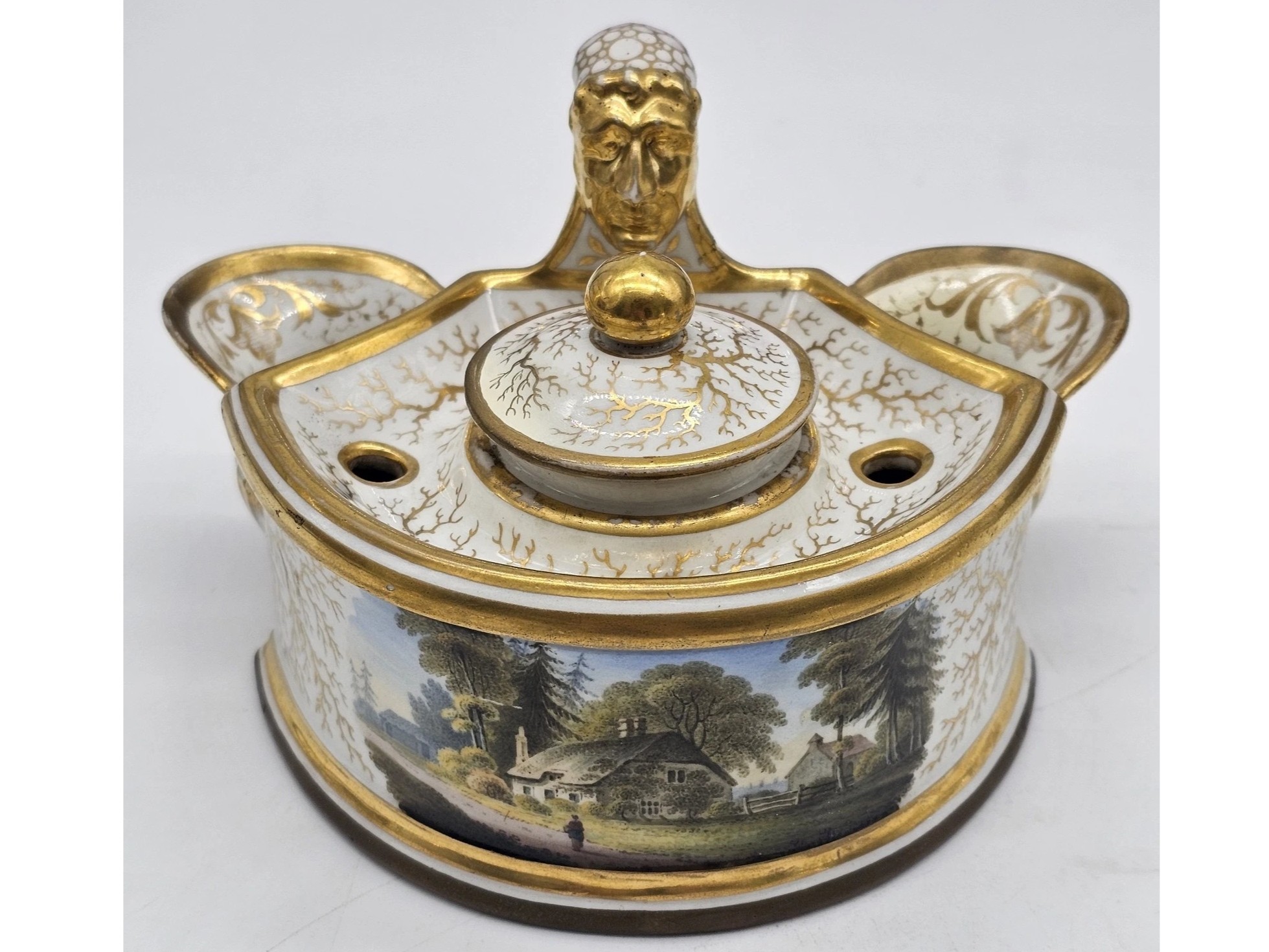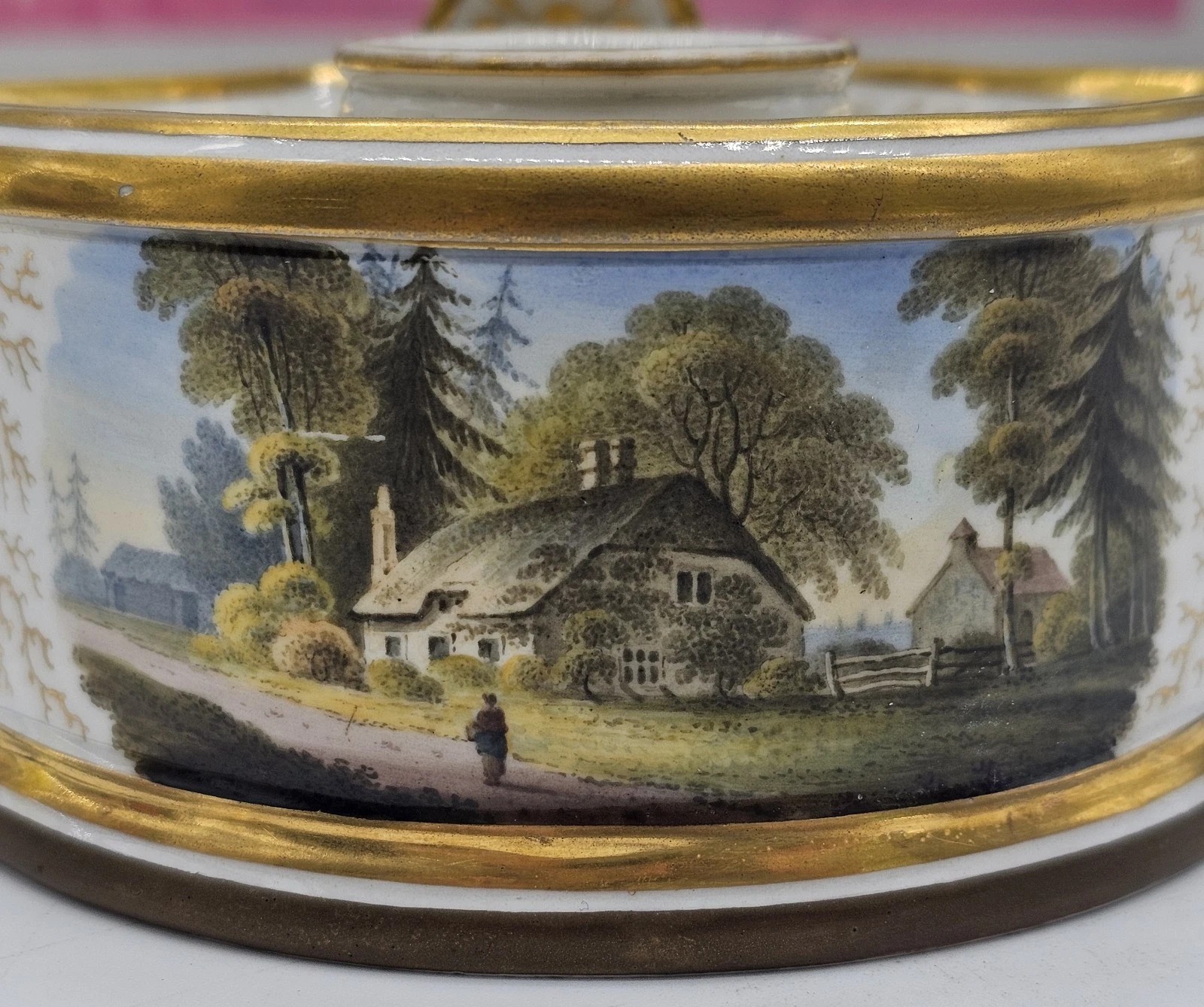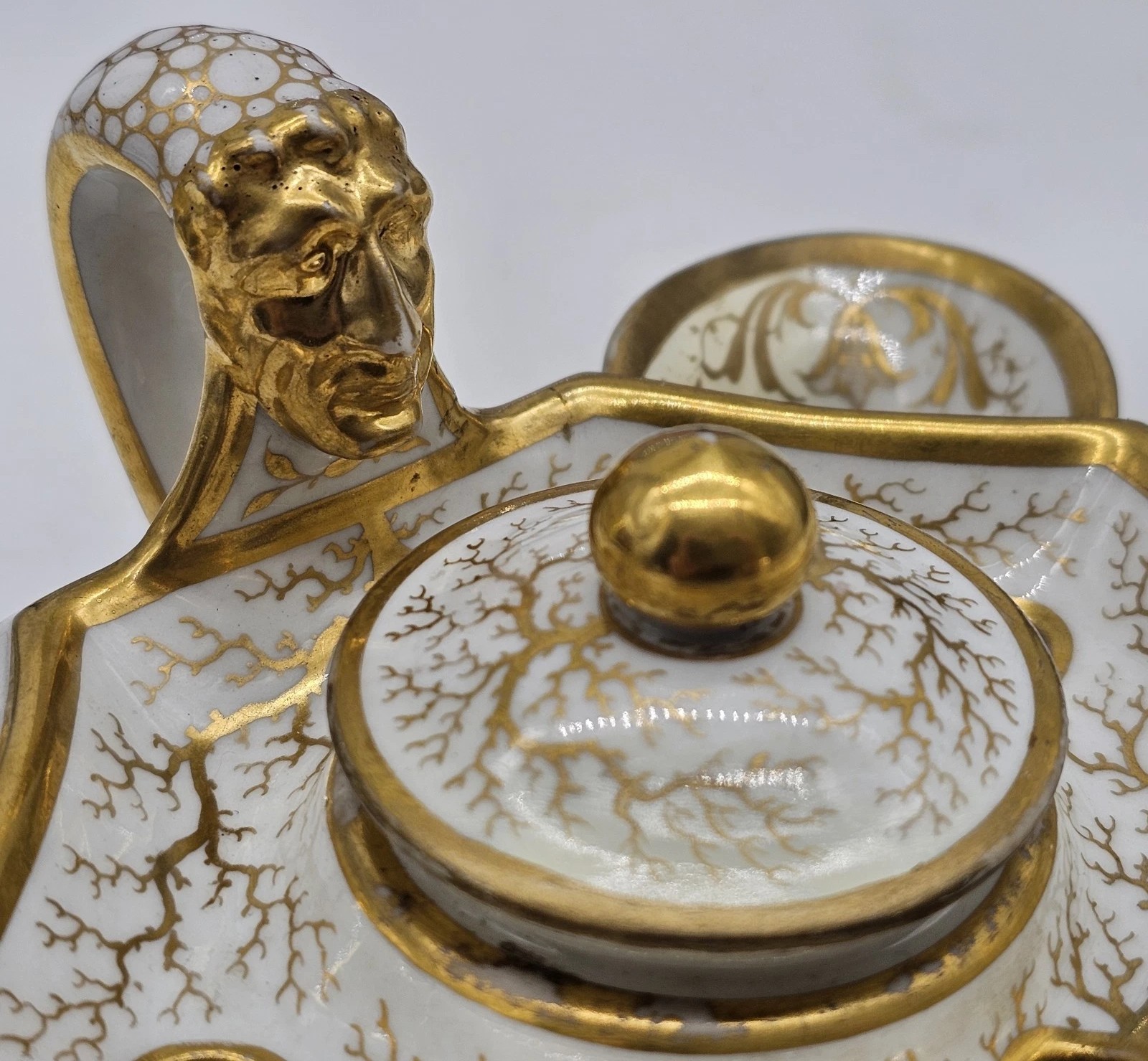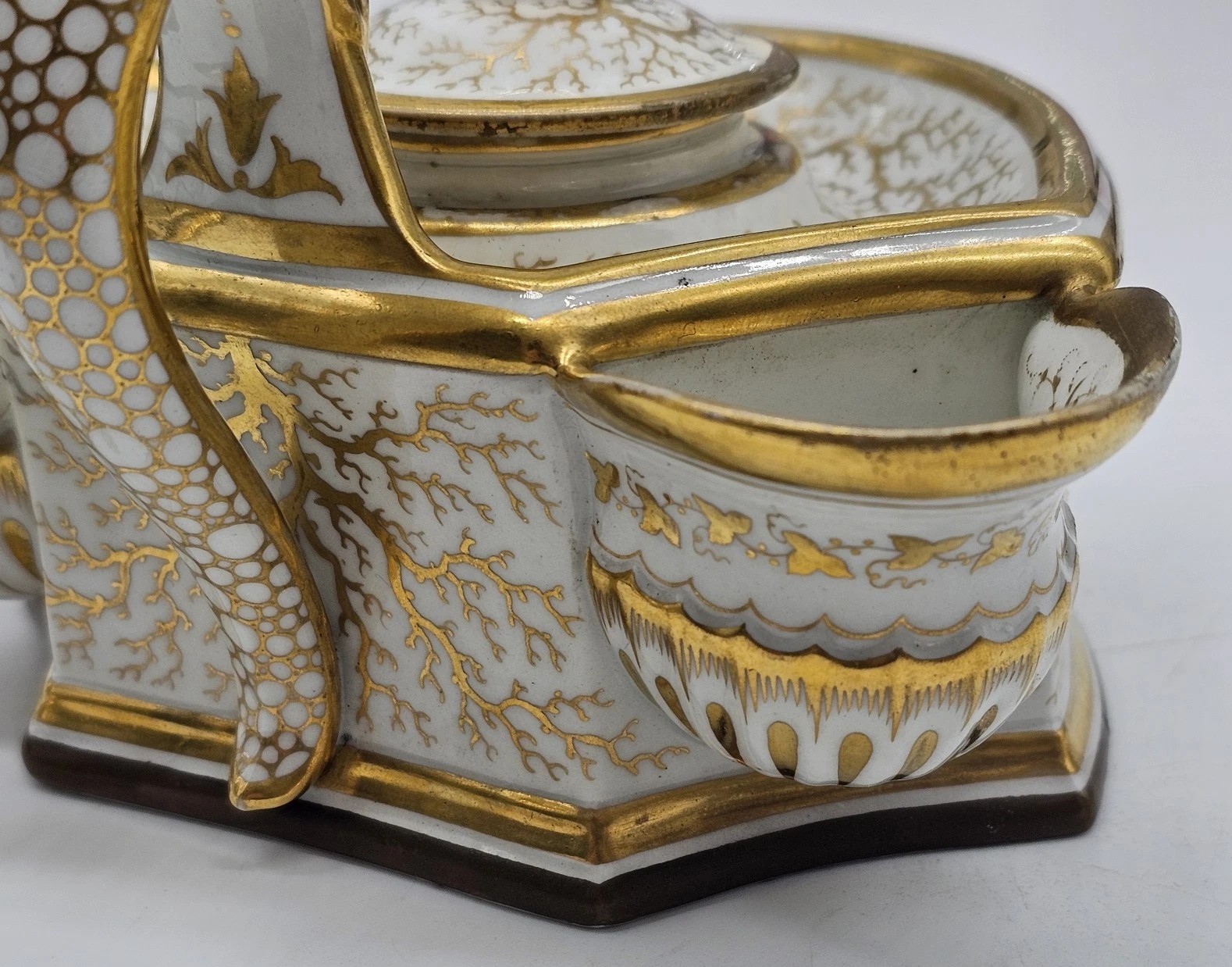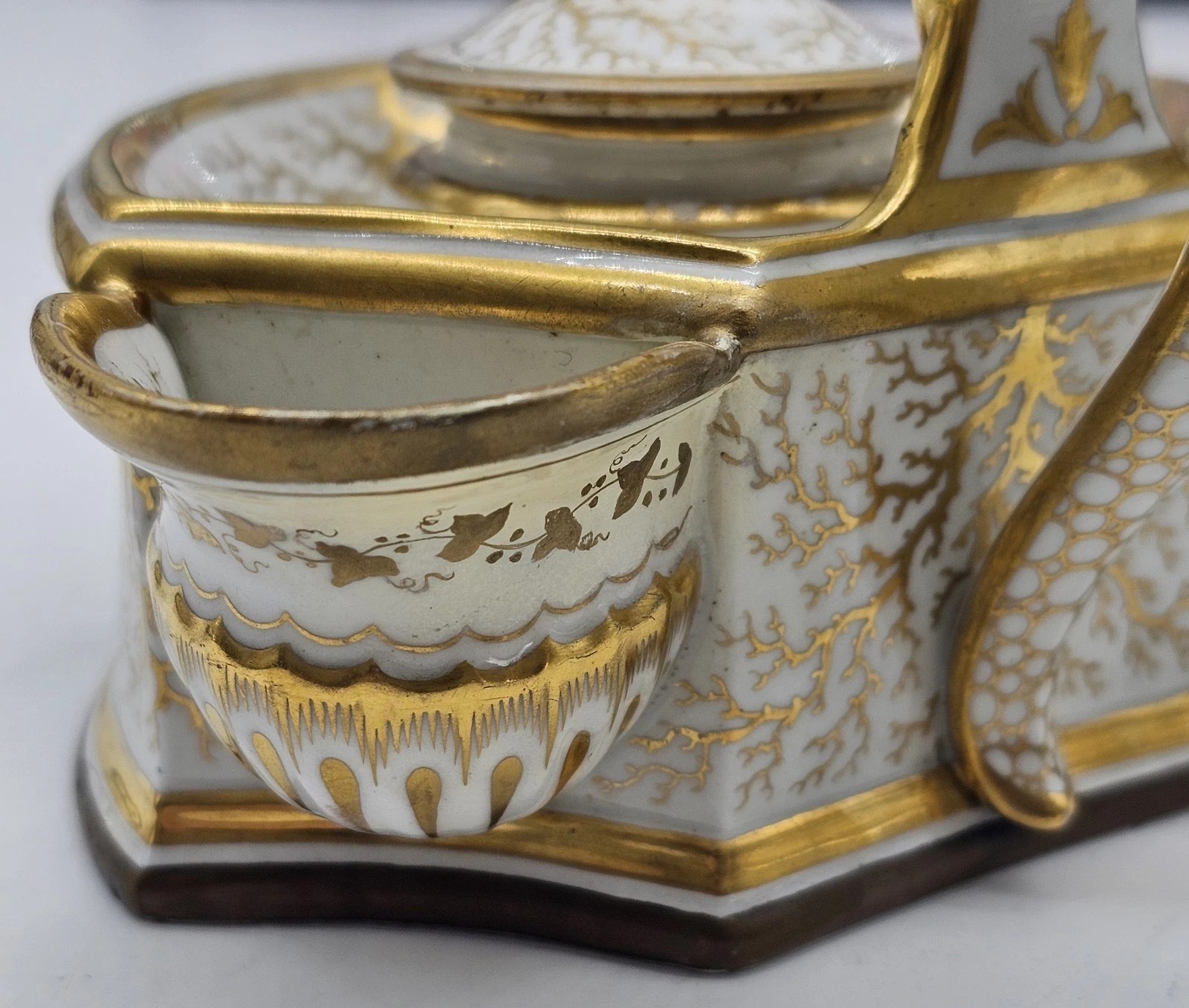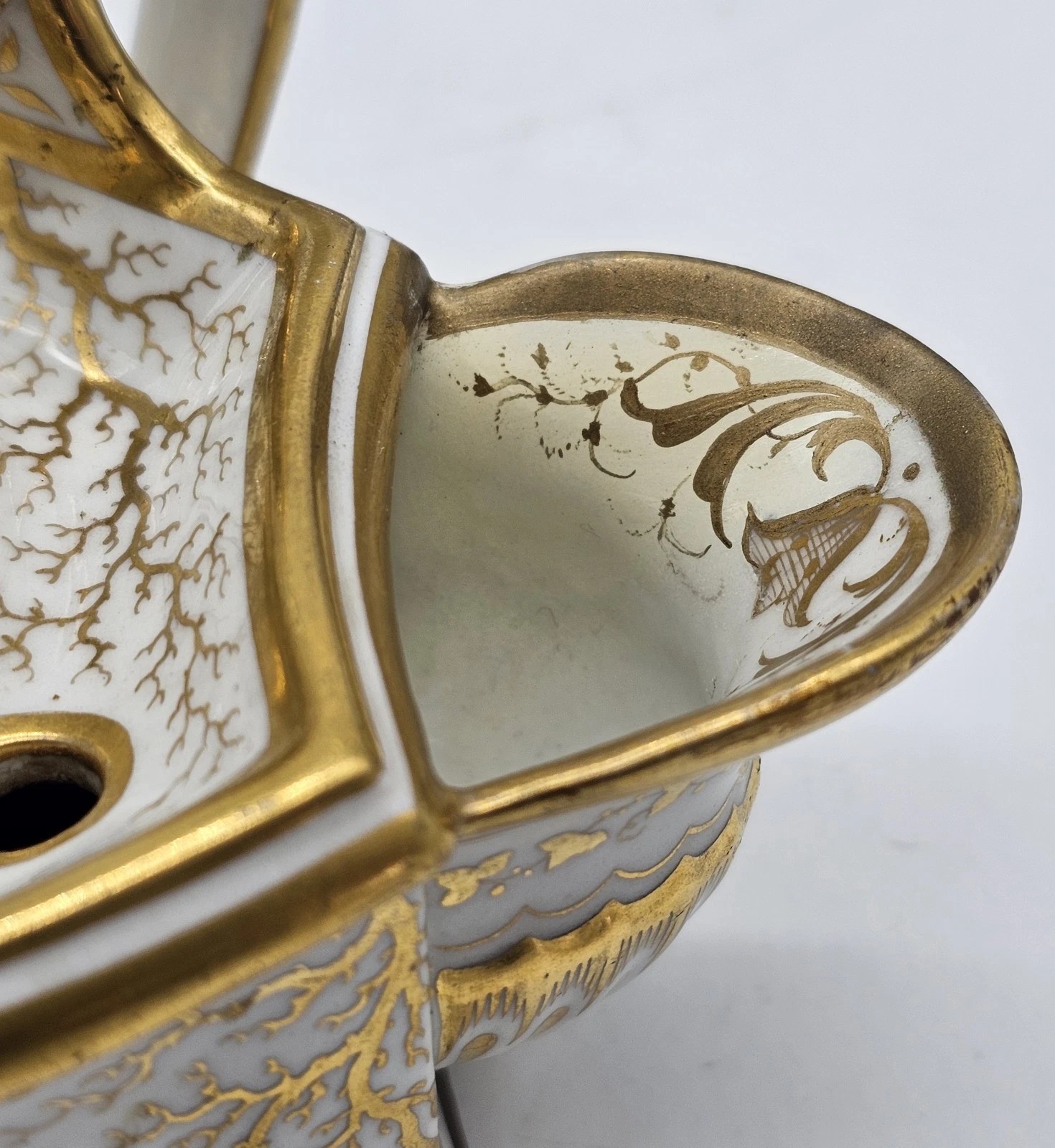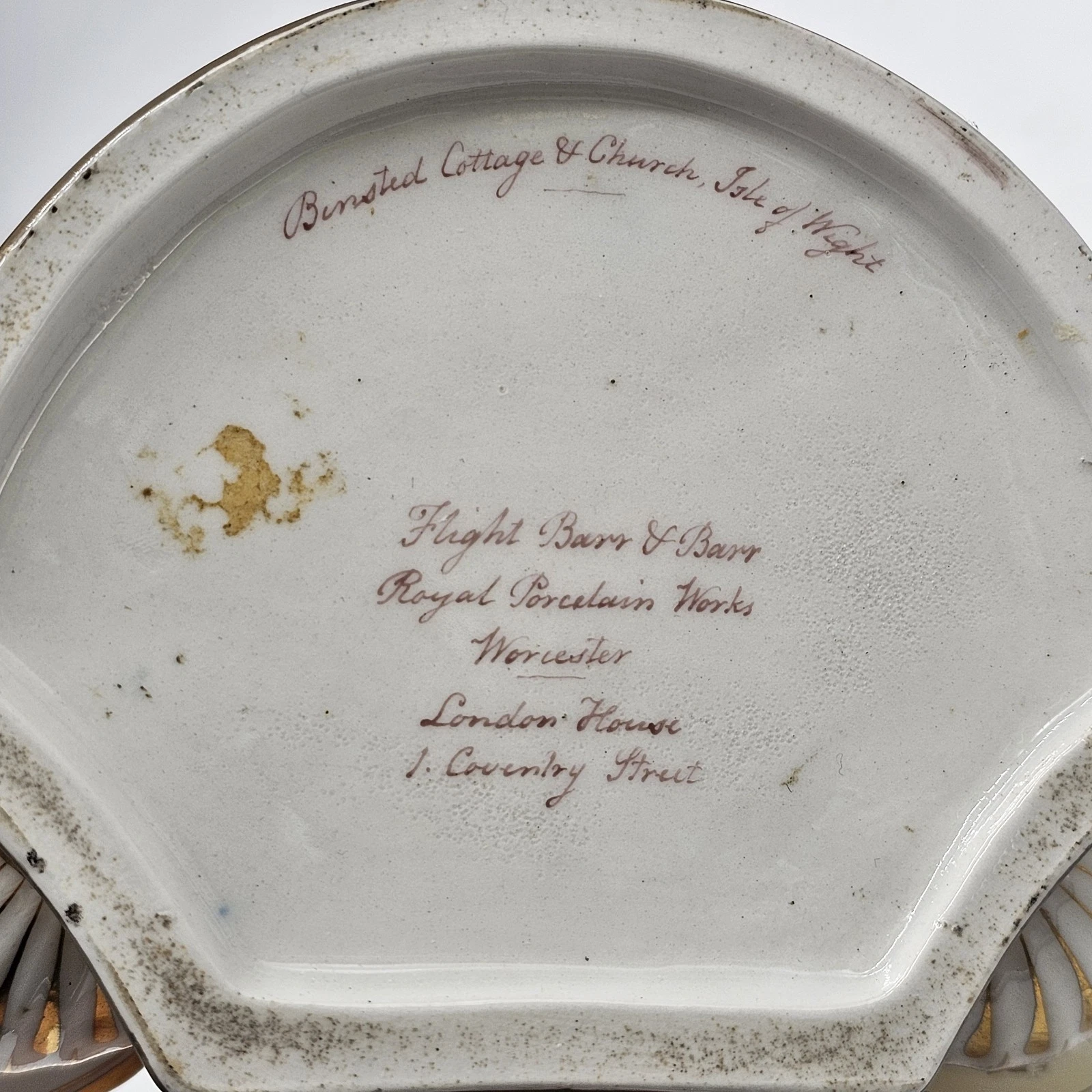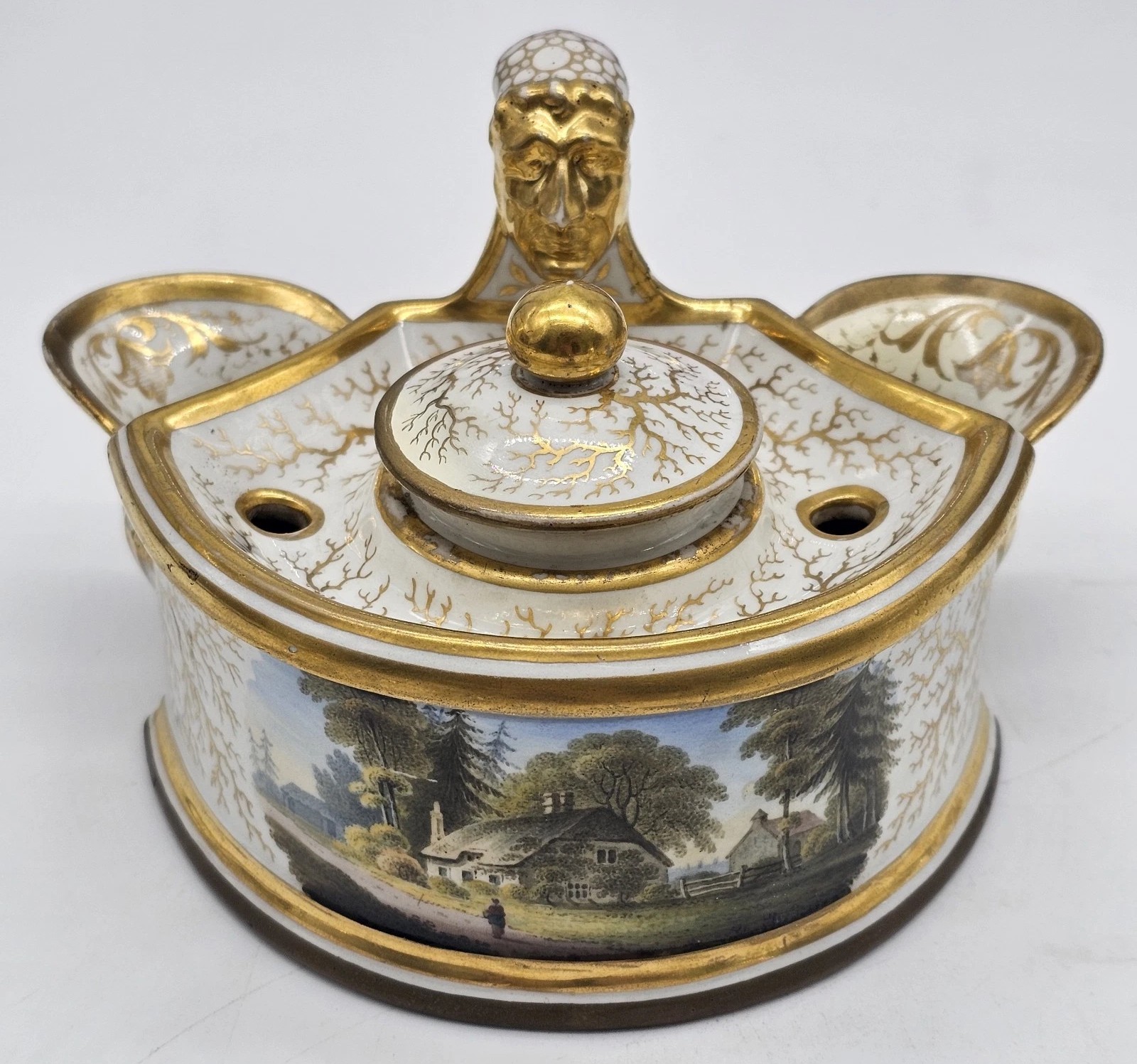
Inkipedia
Binsted Cottage & Church Inkstand
| Categories | Ceramics/Porcelain "Named" Makers |
| Material | Porcelain |
| Markings | See Narrative |
| Manufacturer | Flight Barr & Barr |
| Origin | England |
| Date or Era | circa 1820 |
| Measuring | 5 ¾” x 4 ½” x 3 ½” high |
Description of the Inkstand
- Manufacturer & Provenance: The inkstand is identified by its inscription on the underside of the base as a product of “Flight Barr & Barr; Royal Porcelain Works; Worcester; London House, 1 Coventry Street.” The inscription also reveals the specific scene depicted: “Binsted Cottage & Church; Isle of Wight,” indicating it’s a topographical view.
- Material and Form: The inkstand is made of fine porcelain, characteristic of Worcester’s high standards. It features a semi-circular base with a shaped, slightly scalloped edge.
- Focal Point – Hand-Painted Landscape: The most prominent decorative feature is the beautifully hand-painted rural landscape that adorns the front and center of the inkstand. This scene is identified as “Binsted Cottage & Church; Isle of Wight,” suggesting a bucolic and picturesque view. The painting demonstrates the skilled artistry for which Worcester porcelain was celebrated, with fine detail in the architecture, foliage, and figure.
- Gilding and Decoration: The entire inkstand is extensively gilded. The gilding is applied as intricate patterns of stylized branches. There are leaves of ivy painted under the open pockets.
- Components and Functionality:
- Central Inkwell: The inkwell is centrally located. It has a “lift-off” (not hinged) lid.
- Quill Holes: There are two holes for quills, symmetrically placed on either side of the central inkwell. These would have held writing quills ready for use.
- Open Pockets (Side Receptacles): These open pockets on the sides of the inkstand would most commonly have been used to hold blotting sand (a fine, absorbent sand used to dry ink before blotting paper became widespread) or nib wipes (small pieces of cloth or sponge for cleaning pen nibs). They provide additional utility for a traditional writing desk.
- Rear Handle with Gilt Mask: At the back of the inkstand, there is a distinct handle decorated with a gilt mask or face. This is a classical motif. This handle allows for easy movement of the inkstand.
History of Flight, Barr & Barr
Flight, Barr & Barr represents a significant and highly regarded period in the history of the Worcester Porcelain Factory, one of England’s most celebrated porcelain manufacturers.
- Origins (Worcester Porcelain Company, 1751): The factory was founded in Worcester in 1751, initially known as the Worcester Porcelain Company. It quickly gained a reputation for high-quality soft-paste porcelain.
- Flight Period (1783-1792): In 1783, the factory was bought by Thomas Flight, a former London agent for the company. His sons, Joseph and John Flight, continued the business. During this period, the factory began to gain royal patronage.
- Flight & Barr Period (1792-1807): In 1792, Martin Barr joined the firm, and it became Flight & Barr. This era saw continued innovation and the production of increasingly elaborate and finely decorated wares, often inspired by Neoclassical designs.
- Barr, Flight & Barr Period (1807-1813): The partnership changed slightly to Barr, Flight & Barr, continuing the high standards of production.
- Flight, Barr & Barr (1813-1840): This is the specific period of this inkstand.
-
- The company was officially known as Flight, Barr & Barr from 1813 to 1840. This was a period of intense competition and artistic excellence in English porcelain. They continued to produce highly decorative wares, often for the aristocratic market, featuring elaborate gilding, classical motifs, and exquisite hand-painted scenes (including topographical views, as well as botanical and exotic bird subjects).
- Their London House at 1 Coventry Street served as a showroom and retail outlet for their high-end porcelain, allowing them to cater directly to fashionable London society.
- Merger (1840): In 1840, Flight, Barr & Barr merged with Chambers & Co., another Worcester factory, to form Chamberlain & Co. This marked the end of the “Flight, Barr & Barr” name as a distinct entity. The combined company would later evolve into what we know today as Royal Worcester.
Sold for $750 in June 2025
Content disclaimer. The information posted is the owner’s best knowledge and may not have been vetted by the SOIC. We welcome comments, corrections, and additions, working to make our website information comprehensive and accurate.
Join the Society of Inkwell Collectors (SOIC) – it’s free!
Founded in 1981 as a non-profit organization,
we are documenting inkwells (and accessories).
We’re here to help and inform!
